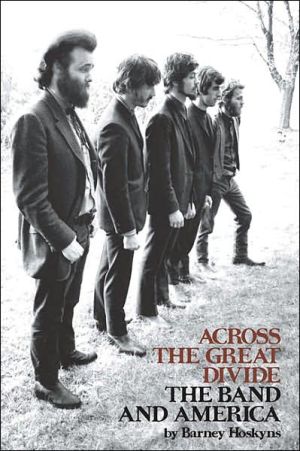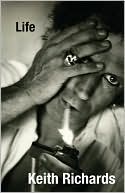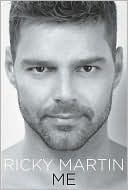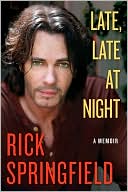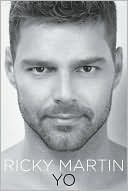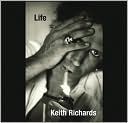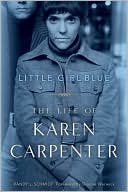Across the Great Divide: The Band and America
A vivid and rollicking biography of one of the great, iconic bands of the 1960s and 70s.\ \ The Band was one of the most celebrated and influential groups to arrive on the music scene in the late sixties. The Band's members -- four Canadians: Robbie Robertson, Richard Manuel, Rick Danko, Garth Hudson, and a drummer from Arkansas, Levon Helm -- fashioned something magically new out of musically traditional components: old-time country and gospel, Preservation Hall jazz, medicine-show...
Search in google:
This is a vivid and rollicking account of The Band's journey across three decades. Spanning the history of American rock and boasting a supporting cast that includes Dylan, Janis Joplin, and U2, the book brilliantly captures the raw magic and complex personalities of a group George Harrison called "the best band in the history of the universe." This revised U.S. edition includes a postscript, together with an obituary of Rick Danko and a brand-new interview with Robbie Robertson. Publishers Weekly In a saga spanning three decades, British journalist Hoskyns ( From a Whisper to a Scream: The Great Voices of Popular Music ) chronicles the story of the critically acclaimed rock group, the Band. As the 1960s dawned, a shared interest in the music of the American South brought Arkansas drummer-vocalist Levon Helm together with four Canadians: guitarists Robbie Robertson and Rick Danko, vocalist Richard Manuel and keyboardist Garth Hudson. Known as the Hawks, they backed up Bob Dylan after his notorious acoustic-to-electric switch; later, they perfected a style of their own at a Woodstock, N.Y., house dubbed ``Big Pink.'' In 1968, their first album as the Band was released, and subsequent hits included ``The Night They Drove Old Dixie Down.'' This account relies heavily on quotations from the likes of critic Greil Marcus, performer Eric Clapton and late promoter Bill Graham. Where-are-they-now final chapters investigate the years after the Band's 1976 split: Robertson pursued Hollywood interests, Manuel committed suicide in 1986 and the others continued solo work. Of the Band's lineup, Robertson proves by far the most loquacious, making this volume a bonanza for his fans in particular, as well as for Dylan aficionados. Photos. (July)
\ Publishers Weekly - Publisher's Weekly\ In a saga spanning three decades, British journalist Hoskyns ( From a Whisper to a Scream: The Great Voices of Popular Music ) chronicles the story of the critically acclaimed rock group, the Band. As the 1960s dawned, a shared interest in the music of the American South brought Arkansas drummer-vocalist Levon Helm together with four Canadians: guitarists Robbie Robertson and Rick Danko, vocalist Richard Manuel and keyboardist Garth Hudson. Known as the Hawks, they backed up Bob Dylan after his notorious acoustic-to-electric switch; later, they perfected a style of their own at a Woodstock, N.Y., house dubbed ``Big Pink.'' In 1968, their first album as the Band was released, and subsequent hits included ``The Night They Drove Old Dixie Down.'' This account relies heavily on quotations from the likes of critic Greil Marcus, performer Eric Clapton and late promoter Bill Graham. Where-are-they-now final chapters investigate the years after the Band's 1976 split: Robertson pursued Hollywood interests, Manuel committed suicide in 1986 and the others continued solo work. Of the Band's lineup, Robertson proves by far the most loquacious, making this volume a bonanza for his fans in particular, as well as for Dylan aficionados. Photos. (July)\ \ \ \ \ Library JournalImplicit within the redemptive qualities commonly ascribed to rock'n'roll is the metaphor of the band/musician as leaders in a spiritual search. The hyperbole that typically ensues from such metaphors is entirely appropriate in reference to The Band, the seminal folk/country/rock group whose recordings, made from 1968 to 1978, psychically imprinted an entire generation. That a predominantly Canadian group should have been so transfixed by, and subsequently successful at, articulating deeply rooted American themes is just one of the seeming paradoxes that Hoskyns explores in this first major study. Borrowing heavily from both previously documented and self-conducted interviews, Hoskyns connects the dots that link The Band with Ronnie Hawkins, Bob Dylan, Woodstock, and the concert film The Last Waltz (1978). Cumulatively, the effect of this treatment is ponderous; Greil Marcus's classic essay ``The Band: Pilgrims' Progress'' in Mystery Train ( LJ 4/1/75), from which Hoskyns liberally borrows, is more revelatory. Still, this solid treatment of an influential group belongs in most popular music collections.-- Barry X. Miller, Austin P.L., Tex.\ \
